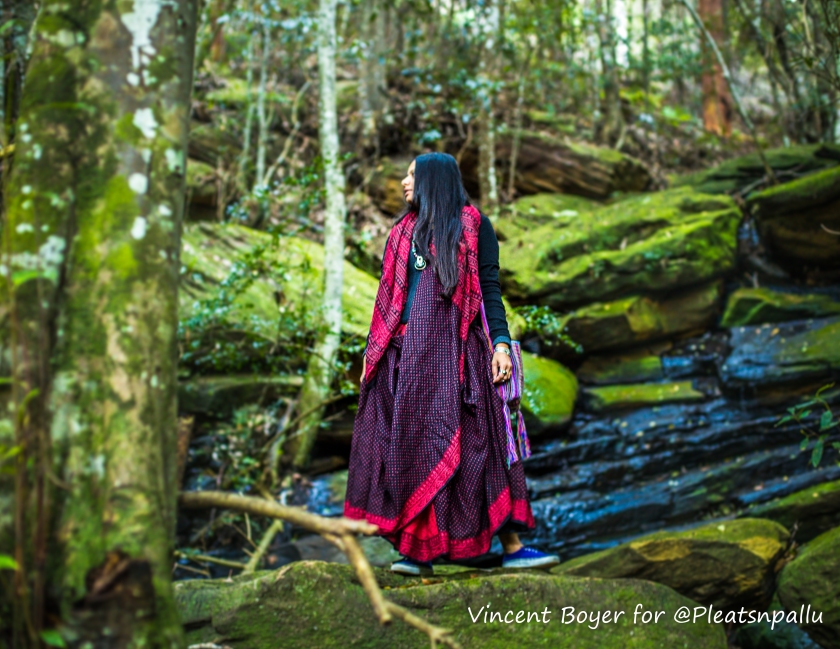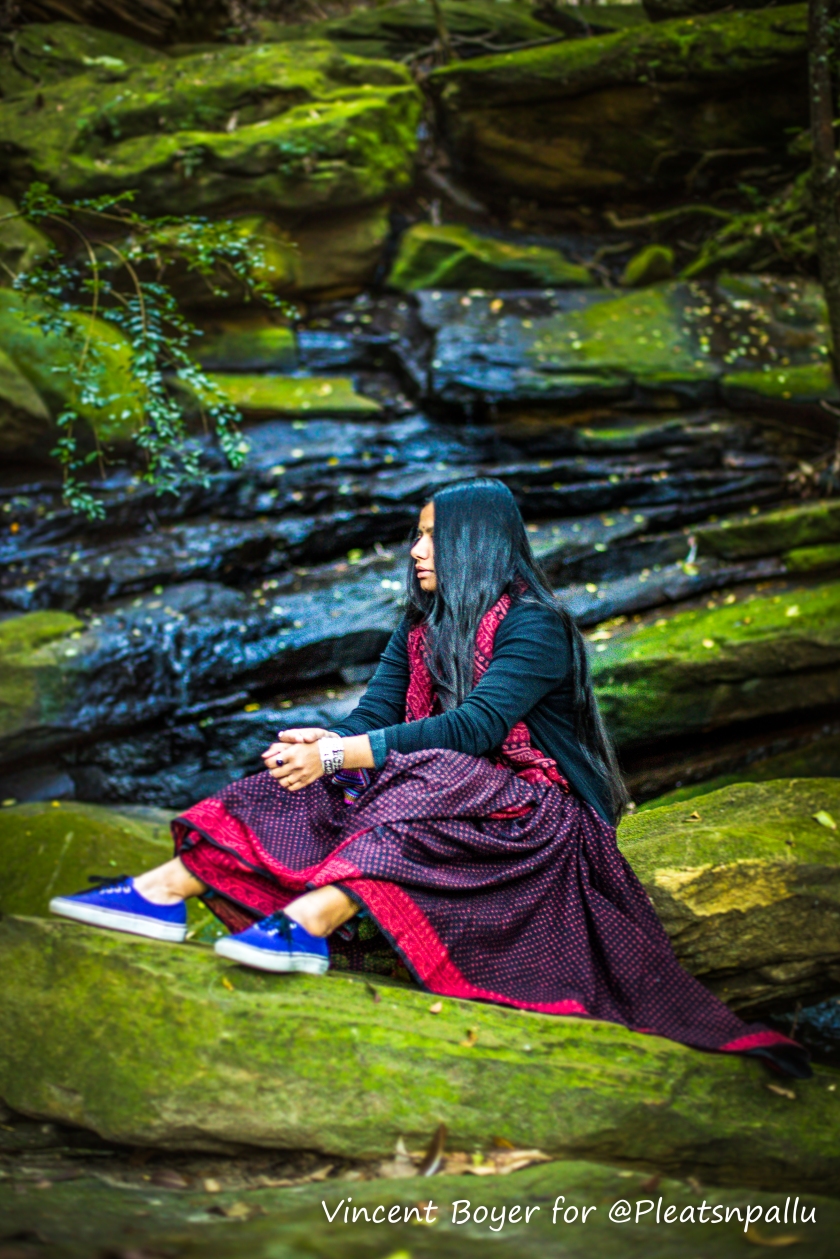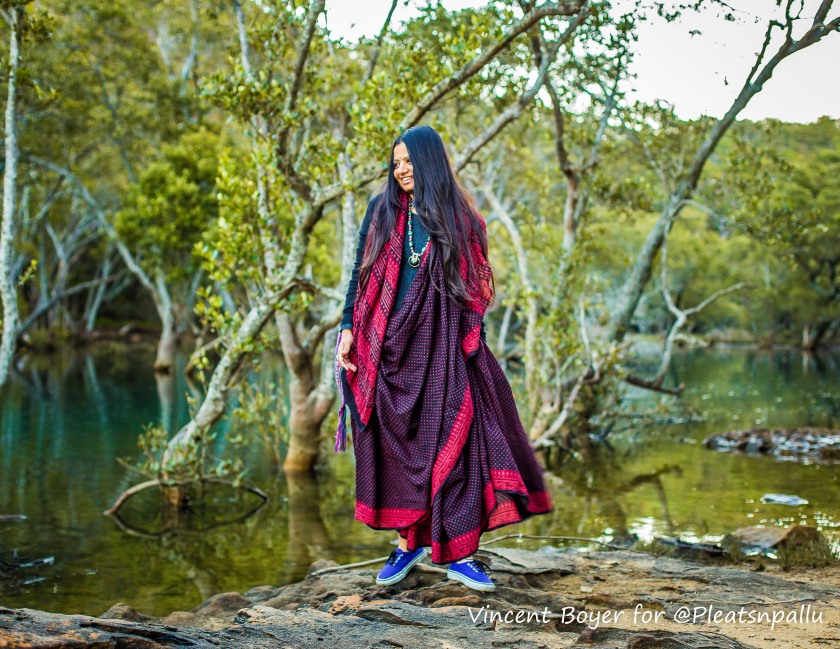One of my favourite things in the spring/summer is to wear all my cropped saree blouses and cholis in fun ways…
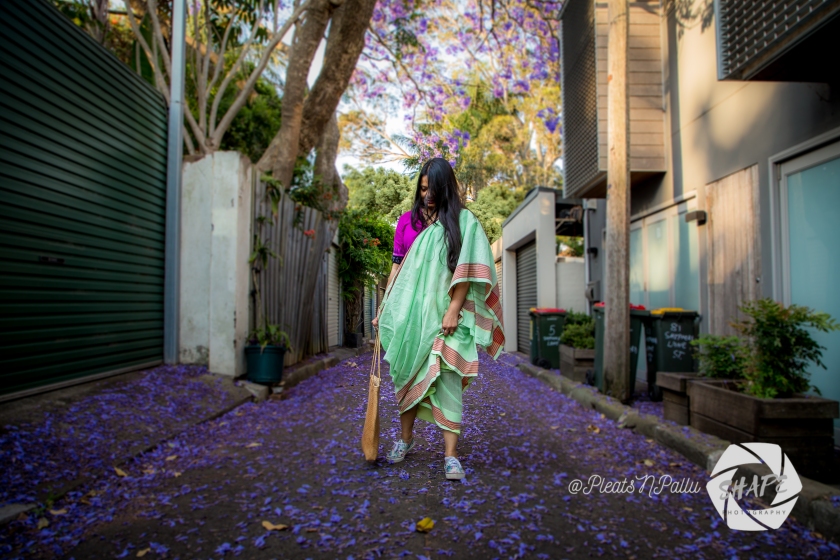
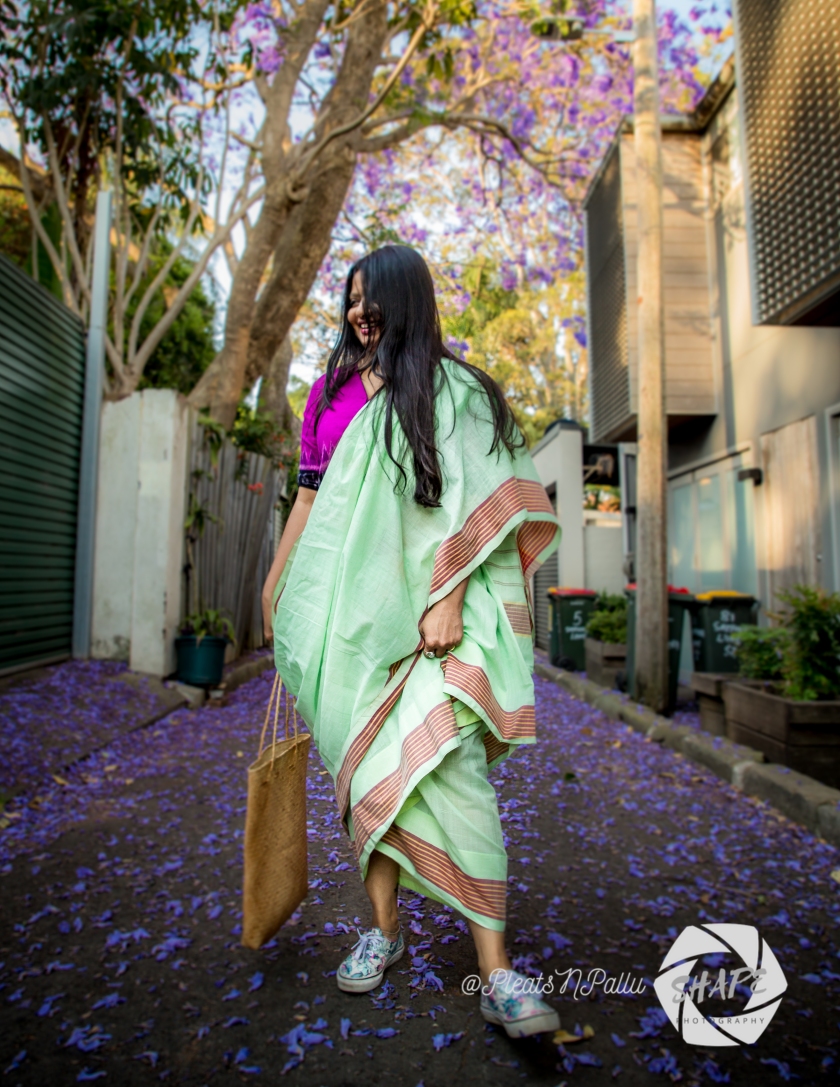
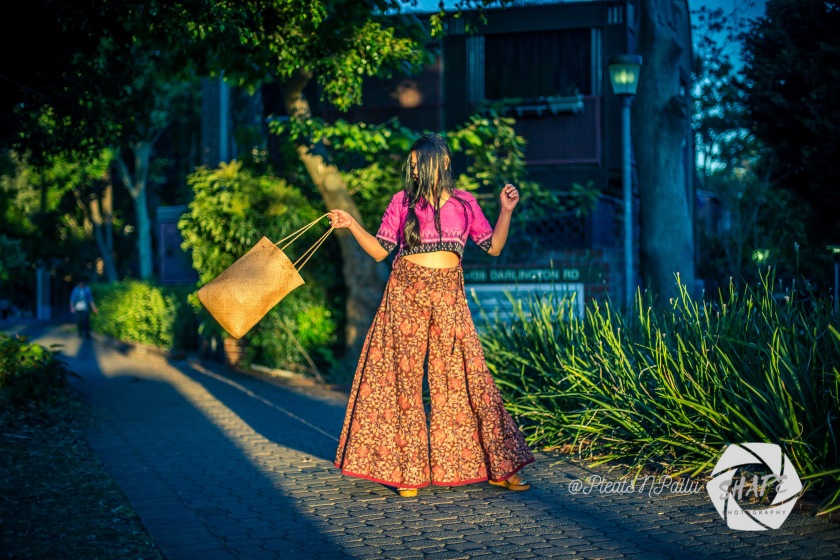
Photos: Vincent Boyer (Say hi on instagram @shape.photos)
These photos feature a Sambhalpuri ikat fabric blouse worn with Kalamkari hand block print palazzo pants plus handcrafted wedge heeled sandals as well as with sneakers and a handloom cotton saree woven in a village called Yeditha in the Mandapeta mandal in the East Godavari district of Andhra Pradesh.
I posted a photo on my instagram last week when I wore the blouse with the Kalamkari flared pants and got a whole bunch of DMs asking me questions on the hows and whys of wearing saree blouses with anything other than sarees.
I have spoken about mixing fabrics and patterns being great fun when styling saree blouses in eclectic ways with basics other than the six or nine yards, along with some pairing ideas in a previous post here.
I totally believe that traditional saree blouses make the best crop tops and have said as much in an old blog post from four years ago here. In this post I want to talk about the little tips and tricks up my sleeve that make it easy to wear saree blouses in multiple ways:
- Going one (or more) size/s up: Oversize saree blouses are my jam, eschewing the norm when it comes to fits is something I love and I feel that non-tight tops are more fun to style with myriad separates.
- Adding fun details: I love adding tiny extras to my blouses, interesting details like buttons, ties, ruffles etcetera, which give me a reason to wear them with a bunch of other items in my wardrobe and get more bang for my buck.
- Keeping the back high: I detest deep backs on saree blouses because I like to be able to keep my fits a little looser than most and also because I like using my blouses as little shrugs or tie up tops.
- Traditional patterned fabrics: I believe traditional fabrics like khadis, brocades or handblock prints or ikats or bandhanis or hand embroidered cholis lend themselves wonderfully to outfits that can take one from a brunch or a work day to the night out in town.
- Eschewing ideas of the perfect body: I think one of the more important reasons I am able to wear saree blouses in fun ways is that I don’t care about how fit or unfit I look. The same goes for swimwear, I don’t have the flattest stomach or toned arms or a super cute butt and that doesn’t stop me from wearing whatever I feel like in ways that makes me happy.
- Playing with flair and proportions: Playing with fit, flair, proportions and patterns keep things interesting when styling one’s outfits and the same applies to saree blouses.
- Relaxed denims: I find flared and relaxed pants/ shorts lend themselves easier to styling with cropped blouses than skinnier fit bottoms and in general I find my drop-crotch jeans the most fun to wear. Case in point, bandhani choli with boyfriend jeans here.
- Ignoring other people’s opinions: There are way too many of us who think it’s okay to have an opinion on what someone else is wearing and how they have styled it. I ignore other people’s ideas and pair whatever I like together. If I am totally feeling myself, I don’t let anyone else take that away from me.
- Steering clear of trends: I prefer classic cuts, old world crafts, ethical producers and comfy fits, no trend can make me waver from things that work for my personality, needs and a sustainable lifestyle.
I hope if there is one thing you take away from this post it is that, when it comes to personal style, do whatever makes you happy. I know I do.
